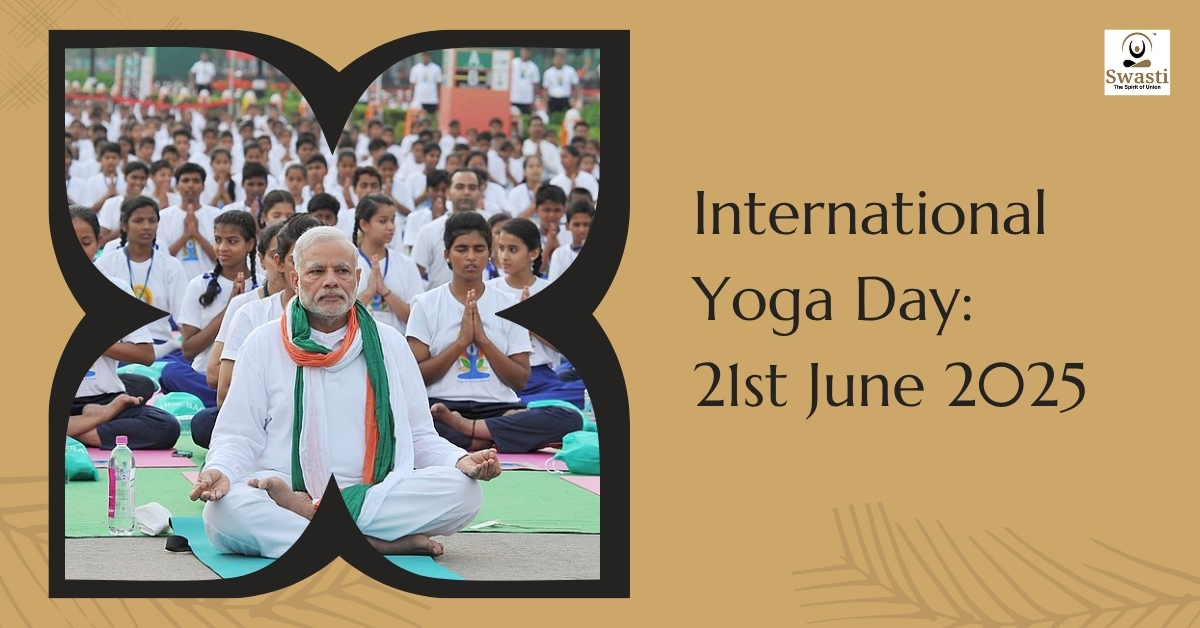
Yoga Meets ESG: A Blueprint for Future-Ready Workplaces
In today’s rapidly evolving business landscape, sustainability is no longer just a buzzword—it’s a necessity. As companies embrace Environmental, Social, and Governance (ESG) principles to align with global responsibility trends, there’s an unexpected yet powerful ally waiting in the wings: Yoga. Integrating yoga into corporate ESG strategies isn’t just about employee wellness—it’s about unlocking holistic transformation, brand trust, and measurable business impact. Why ESG Needs a Wellness Pillar Like Yoga? Corporate ESG strategies often focus on environmental initiatives or diversity metrics. However a critical piece often overlooked is employee well-being. Burnout, stress, and mental health challenges are now leading causes of attrition and productivity loss. Here’s where yoga comes in. Rooted in ancient wisdom and validated by modern science, yoga enhances mental clarity, emotional intelligence, resilience, and physical health—traits directly contributing to the ‘Social’ and ‘Governance’ pillars of ESG. Yoga is more than just exercise—it’s a lifestyle framework. Concepts like Ahimsa (non-violence) and Aparigraha (non-possessiveness) align naturally with environmental ethics and minimalist living. When adopted across a company’s culture, these values subtly push teams toward sustainable thinking, ethical governance, and conscious decision-making. Three Powerful Ways to Integrate Yoga into ESG Frameworks 1. Yoga as Part of Social Sustainability (S in ESG) The ‘Social’ aspect of ESG revolves around how a company treats its people—diversity, inclusion, health, and well-being. By offering regular yoga and mindfulness programs, businesses can: Reduce absenteeism and healthcare costs Improve mental health, emotional intelligence, and interpersonal relationships Support inclusion by ensuring yoga is culturally inclusive and accessible to all levels of employees Companies like Google, TCS, and Infosys have embedded yoga and mindfulness into their employee development plans, reporting higher retention, creativity, and lower stress levels. Structured programs such as the Green Yoga Instructor Certification—specifically designed for corporate environments—are gaining momentum. These programs equip wellness professionals with tools to teach yoga while also addressing sustainability, emotional intelligence, and mindfulness—making wellness a part of the company’s ESG fabric. 2. Promoting Environmental Consciousness through Yogic Living (E in ESG) Yoga teaches awareness and interconnectedness with the planet. Corporates can: Link yoga retreats or sessions with environmental causes (tree plantation drives, zero-waste challenges, plastic-free days) Encourage yogic values like Satvik (pure) food choices, which have a lower carbon footprint Promote mindful consumption and digital minimalism as part of workplace habits The Green Yoga Instructor Program, for instance, includes modules on climate-conscious living, workplace sustainability practices, and eco-mindfulness, helping companies meet their environmental goals while empowering wellness leaders within. 3. Yoga-Based Leadership and Governance Models (G in ESG) Governance isn’t just about policies—it’s about people making ethical, balanced decisions. Yoga improves self-regulation, emotional resilience, and clarity, which are essential leadership traits. HR can: Introduce yogic leadership training for CXOs and senior managers Integrate decision-making practices rooted in mindfulness (pause, reflect, act) Use yogic ethics as part of leadership KPIs or appraisal systems Companies committed to ESG and BRSR (Business Responsibility and Sustainability Reporting) have started integrating BRSR-aligned Yoga Programs, like those offered by Swasti Yoga Center, to foster leadership that is not only strategic but deeply rooted in ethics and self-awareness. These programs help businesses meet evolving reporting mandates while nurturing conscious leadership. Tips to Get Started: A 5-Step Plan for HR and ESG Leaders Begin with a Needs AssessmentSurvey your employees to understand stress levels, mental health needs, and openness to yoga. Use this data to design customized programs. Pilot a Wellness + ESG ProgramStart small—a 21-day mindfulness challenge or yoga-at-desk series that includes sustainability talks. Measure its impact on mood, productivity, and employee feedback. Collaborate with Certified Yoga ProfessionalsPartner with reputed centers offering structured ESG-aligned yoga programs, such as Green Yoga Instructor Certification or BRSR Yoga Training. Ensure cultural inclusivity and alignment with international wellness standards. Embed it in ESG ReportingTrack metrics like mental well-being scores, employee engagement, absenteeism, and carbon-conscious behavior. Publish them in sustainability or annual reports. Scale with Culture, Not Just ClassesIntegrate yoga in daily rituals—start meetings with 1-minute breathwork, include yoga-themed corporate gifts, or offer weekend yoga retreats linked with green travel. Market Opportunity: Where Yoga + ESG is Heading The global corporate wellness market is expected to reach $94 billion by 2027, with mindfulness and yoga programs leading the trend. Simultaneously, ESG investments are projected to cross $53 trillion by 2025, making up one-third of global assets under management. Imagine the synergy: A company offering yoga-based ESG programs signals to investors that it cares about its people and the planet. It boosts employer branding, attracts Gen Z and millennial talent who prioritize purpose over paychecks and creates organic PR through positive employee advocacy. Case in Point: A Vision for the Future A mid-size tech company in Pune recently implemented a “Green Yoga Workplace” model in collaboration with Swasti Yoga Center. The initiative included weekly yoga sessions, carbon-neutral office practices, and sustainable team-building activities like composting and community gardening. Within 6 months, they reported: 22% drop in stress-related sick leaves 34% increase in productivity scores A featured ESG case study in a leading investor newsletter Higher retention in mid-level management roles This is not just wellness—it’s strategic transformation. Conclusion: Future-Ready Companies are Yogic and Sustainable As the world faces climate anxiety, burnout, and ethical crises, future-ready companies will not be defined by how fast they grow, but by how consciously they grow. Yoga fused with ESG offers a blueprint that is sustainable, ethical, profitable, and human-centric. For HR professionals, this is the moment to lead the change—not just for employee wellness, but for long-term corporate well-being. Start small, measure consistently, and scale mindfully. The ROI won’t just be in numbers—but in purpose, peace, and planet-positive profits. Let yoga be not just a mat activity, but a boardroom strategy. By Dr. Vikas ChotheFounder, Swasti Yoga Center










